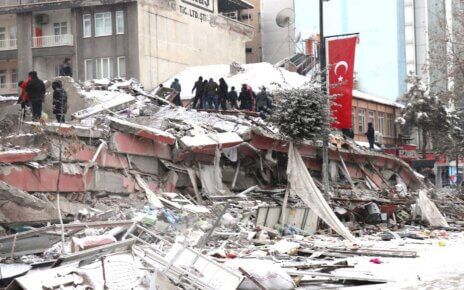On Feb. 24, Russia invaded the sovereign state of Ukraine in a significant escalation of the ongoing 2014 Russo-Ukrainian war.
In recent events, Ukraine has been making significant strides toward ending the war, with hopes of ultimately putting an end to the eight-year long conflict. Ukraine’s latest counteroffensive on the Russian-occupied territory of Ukraine’s Kharkiv Oblast was launched on Sept. 6, which drove Russian forces back to the left bank of the Severskyi Donets and Serednya Balakliika rivers.
On this day, Ukrainian forces were able to capture Verbivka from the Russian occupiers. Several Russian sources reported that Russian forces retaliated against the counteroffensive by demolishing unspecified bridges on the eastern outskirts of Balakliia to prevent further Ukrainian advances.
Within five days, Ukrainian forces have been able to break through the cities of Balakliya, then Kupyansk, then Izium (all of which have been under Russian occupation since the Spring).
The Institute for the Study of War stated that by Sept. 10, Ukrainian forces had already captured approximately 2,500 square kilometers in the Kharkiv region.
Furthermore, Reuters reported that Russian forces had been forced to withdraw from their positions at Izium after the capture of the key railway hub Kupiansk.
On Sept. 11, Newsweek reported that “Ukrainian forces had penetrated Russian lines to a depth of up to 70 kilometers in some places and retaken more than 3,000 square kilometers of territory since Sept. 6.
The advancement of the Kharkiv counteroffensive has proven to be successful with Russian sources, claiming that the advancement of Ukrainian troops into Russian-occupied territory was likely due to the relocation of Russian forces to Kherson, in response to the Ukrainian offensive there.
The Kharkiv advance marks the biggest Ukrainian success since early in the war when it successfully prevented a Russian attempt to seize the capital Kyiv.
However, concerning the recent counteroffensive, Russian troops are reportedly surrendering en-masse. A Ukrainian General Staff report revealed more than 15 cases of occupying forces in civilian clothes resorted to desertion and made attempts to return to the territory of the Russian Federation.
Ukrainian President Volodymyr Zelenskyy made a video address Saturday night in which he stated, “The Russian army in these days is demonstrating the best that it can do — showing its back.”
On Sept. 11 the Leader of Russia’s Chechen Republic, Ramzan Kadyrov, in his telegram channel responded to the recent events by stating, “If changes are not made to the conduct of the special military operation today or tomorrow, I will be forced to turn to the country’s leadership to explain the situation on the ground to them.”
Kadyrov also admitted that the campaign in the Kharkiv Oblast did not go according to plan.
In response to the successes of Ukraine’s Kharkiv Counteroffensive, Russia reportedly attacked power stations and other infrastructure on Sunday, causing widespread outages across Ukraine. Moreover, this attack has left at least one person dead in an act that President Volodymyr Zelenskyy denounces as terrorism.
Furthermore, Ukrainian President Volodymyr Zelensky announced at the annual Yalta European Strategy meeting in Kyiv on Saturday that tensions between Ukraine and Russia have reached a state where negotiations with the Russian Federation to end the war are “impossible.”
Although there is still much uncertainty about when and if this conflict will eventually come to an end, one thing is for certain—Ukraine has shown its strength throughout the past seven months and has proven its cause will not be dissuaded easily as Ukrainian forces continue to combat Russian forces in Ukraine.


